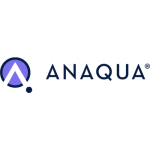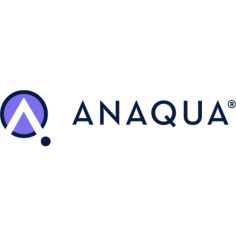Briefing April 2021: Channel crossing, by Seeunity
Law firms need to take governance seriously when moving to work in new ways. The challenges of the latest shift are not without precedent, says Dan Anderson, CEO at SeeUnity, but there is a clear case for investment in content automation to keep business secure
Law firms around the world have had their work cut out managing the new ways their people suddenly needed to collaborate during the pandemic. However, Dan Anderson, CEO of system integration specialist SeeUnity, says the path to maximising investment in a platform such as Microsoft Teams is not entirely new.
“Firms are heavily tied to their document management systems. Content ultimately has to be stored and managed there, so they need secure integration with any other channels in use,” he explains. Recent work with many firms on the rollout of Teams has reminded him of similar challenges they faced with Microsoft SharePoint.
“The key business requirements continue to be around ease of use and employee adoption of the toolset, as well as our specialism of both one-to-one and one-to-many integrations with other solutions.”
Under pressure to meet clients online wherever they are in 2021, law firms will increasingly now use a growing number of channels to communicate and collaborate on work externally. “Those clients will each have preferred systems for project management, so law firms need the ability and agility to support all of them,” he explains.
“The other big direction of travel is towards the cloud, and they need solutions that continue to support as cloud providers introduce changes. Law firms don’t want to spend time and money building custom solutions for that while improving their business processes. Cloud providers need all integrations to be certified, and the only option is a product-based API integration.”
“Clients will each have preferred systems for project management, so law firms need the ability and agility to support all of them,” Dan Anderson, CEO, SeeUnity. “Firms have had to adapt quickly. They’ve rapidly pushed the new technology out, people immediately started to use it and now the firms find they need to implement a strategy for governance as soon as possible,” adds Anderson.
Establishing boundaries
SeeUnity’s range of API-based content integration and migration products cover on-premises, cloud and hybrid applications. Regardless of strategy there, however, one top challenge in a world of dispersed working is document and information governance. Once again, there is a parallel with the SharePoint boom.
“The firms have had to adapt quickly. They’ve rapidly pushed the new technology out, people immediately started to use it and now the firms find they need to implement a strategy for governance as soon as possible. Some are clearly struggling with the balance between streamlining business process for efficiency in the face of fewer resources and establishing ethical walls and rules surrounding content security in the new working world.”
There are solutions that enable firms to set up such rules – for Teams activity, for example, but also Microsoft OneDrive or perhaps a HighQ site – at the point a new matter is created in the DMS. Anderson explains: “Firms don’t need to slow matter process down in the interests of security, nor do they need to spend time setting up synchronisation rules for individual matters in an ad hoc manner.” Lawyers, meanwhile, don’t need to make the decisions about which content can move where. They can work as they need to within new systems to collaborate with others more productively, and without thinking about the limits as these are automatically established in the background.
As an example, SeeUnity’s new ‘meta rule manager’ Echo Automate facilitates this, not only by securely syncing content from new collaboration spaces with the DMS workspace, but also automating the very detection of any such space as a lawyer creates it. “If no workspace is found, it will automatically create one from a template,” says Anderson. “Rules are then established to sync at prescribed times, and these are automatically removed when sites are no longer required.” The content is archived back to the DMS, and ultimately the system of record maintains its
position as such. “With neither user nor IT involvement in the process, it’s helping firms to stay in control of documents and data at scale.”
Extensive ability
Anderson admits SeeUnity is learning alongside its customers here to an extent – but that also allows the team to take what they’re seeing, digest lessons and disseminate best practice. “Firms are increasingly turning to us not only for products, but also for advice on aspects of the transformation involved given the pace of change,” he says.
“Just as on the SharePoint journey, they need to support the user’s needs as well as they possibly can, with clear understanding of the limitations.”
And at the same time as creating new API connectors to solutions, SeeUnity is striking out in a few new strategic directions itself. There is a partnership with cloud-based case and matter management platform FileVine, for example. Here firms can automatically pull out key legal project details as well as documents from the DMS – task assignment, deadlines and reports – and, of course, sync them in securely.
Deeply connected to Microsoft since long before the quick switches of working practice we’ve seen in the last year, Anderson says SeeUnity was rapidly able to turn its hand to helping law firms make the most of Teams when the time came. “Now we can just as easily extend what we do to support further new platforms with integrations as they appear in the future.”
This sponsor comment was taken from Briefing April 2021. To read the full report, click here.



